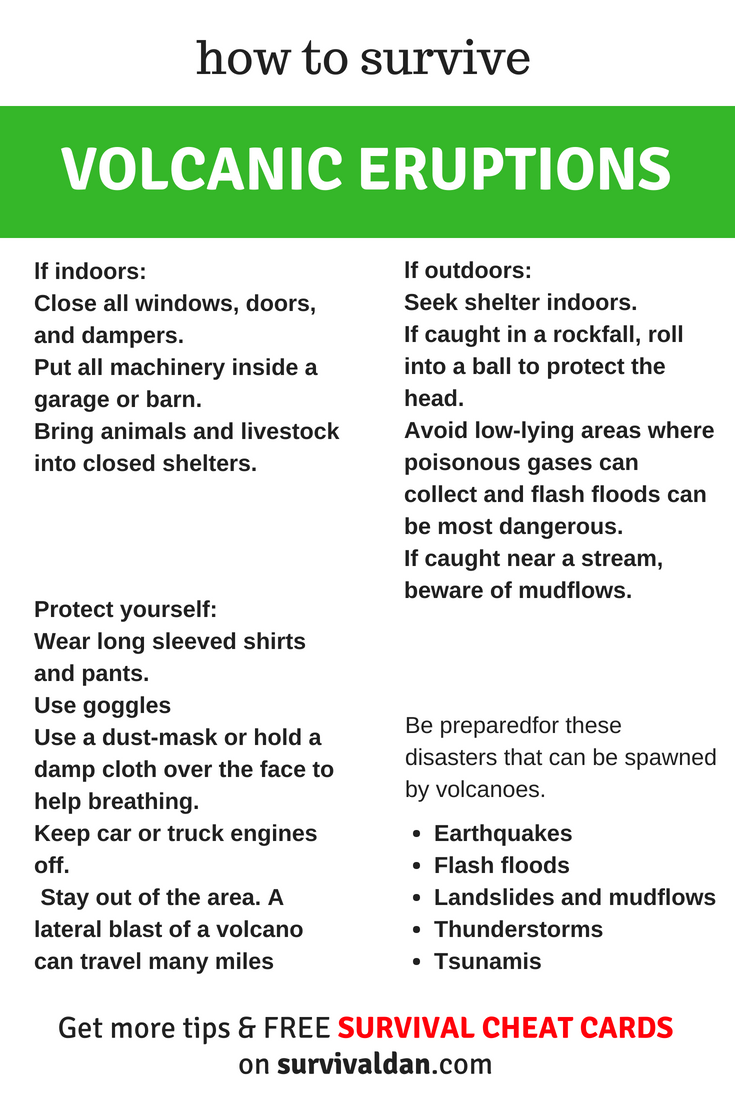Volcanoes
Volcanic eruptions can hurl hot rocks for at least 20 miles. Floods, airborne ash, or noxious fumes can spread 100 miles or more. If you live near a known volcano, active or dormant, be ready to evacu- ate at a moment’s notice. Learn about your community warning systems.
Be preparedfor these disasters that can be spawned by volcanoes.
- Earthquakes
- Flash floods
- Landslides and mudflows
- Thunderstorms
- Tsunamis
During a Volcanic Eruption
Avoid areas downwind of the volcano.
lf indoors:
- Close all windows, doors, and dampers.
- Put all machinery inside a garage or barn.
- Bring animals and livestock into closed shelters.
lf outdoors:
- Seek shelter indoors.
- If caught in a rockfall, roll into a ball to protect the head.
- Avoid low-lying areas where poisonous gases can collect and flash floods can be most dangerous.
- If caught near a stream, beware of mudflows.
Protect yourself:
- Wear long sleeved shirts and pants.
- Use goggles to protect eyes.
- Use a dust-mask or hold a damp cloth over the face to help breathing.
- Keep car or truck engines off.
- Stay out of the area. A lateral blast of a volcano can travel many miles from the mountain. Trying to watch an erupting volcano is a deadly idea.
Mudflows
Mudflows are powerful “rivers” of mud that can move faster than people can walk or run. Mudflows occur when rain falls through ash-carrying clouds or when rivers are damed during an eruption. They are most dangerous close to stream channels. When you approach a bridge, first look upstream. If a mudflow ls approaching or moving beneath the bridge, do not cross the bridge. The power of the mudflow can destroy a bridge very quickly.
After an Eruption
- Listen to a battery-powered radio or television for the latest emergency information.
- Stay away from volcanic ashfall.
When outside:
- Cover your mouth and nose. A number of victims of the Mount St. Helens volcano died from inhaling ash.
- Wear goggles to protect your eyes.
- Keep skin covered to avoid irritation or burns.
- If you have a respiratory ailment, avoid contact with any amount of ash. Stay indoors until local health officials advise it is safe to go outside.
- Avoid driving in heavy ashfall. Driving will stir up more ash that can clog engines and stall vehicles.
- Clear roofs of ashfall. Ashfall is very heavy and can cause buildings to collapse.
For more on Volcanoes, take a look at the Hawaii Lava Hiking chapter
Quick Cheat Card to keep and share:

